Have a story to tell? Sing it out
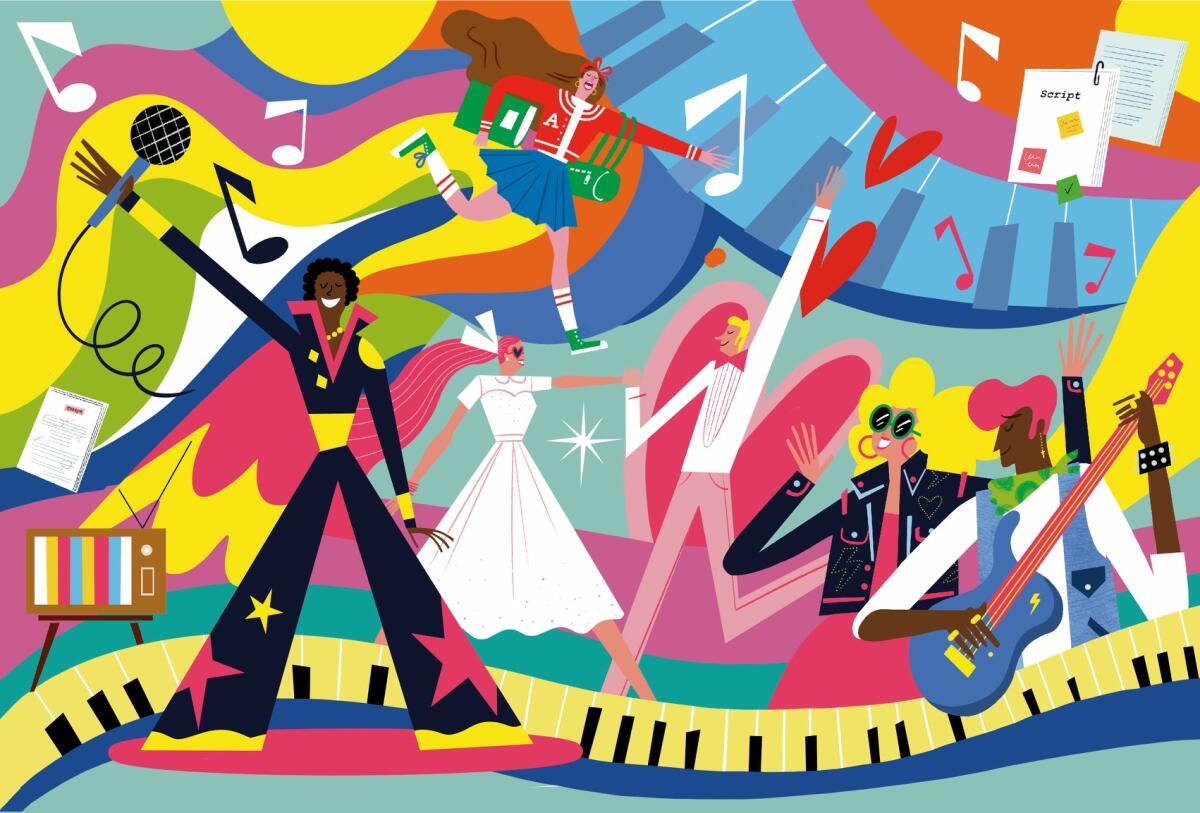
- Share via
TV is alive with the sound of music. Flip on nearly any streaming service lately and somebody, somewhere, in some scripted series is probably singing their little hearts out. Such series as Apple TV+’s “Schmigadoon,” Prime Video’s “Daisy Jones and the Six,” Paramount+’s “Grease: Rise of the Pink Ladies” and “George & Tammy,” Hulu’s “Up Here” and Peacock’s “Pitch Perfect: Bumper in Berlin” star multi-talented performers singing, acting and sometimes even dancing in episodic musicals.
“Everyone said this would be a big swing for us,” says Cinco Paul, co-creator (with Ken Daurio) and showrunner of “Schmigadoon,” a series that both parodies and embraces the classic musical. “But when this kind of show works, it really works. People watch these episodes again and again. They’re not going to watch ‘Succession’ six times, but an episode of a musical show — you can fast-forward to the numbers again and again.”
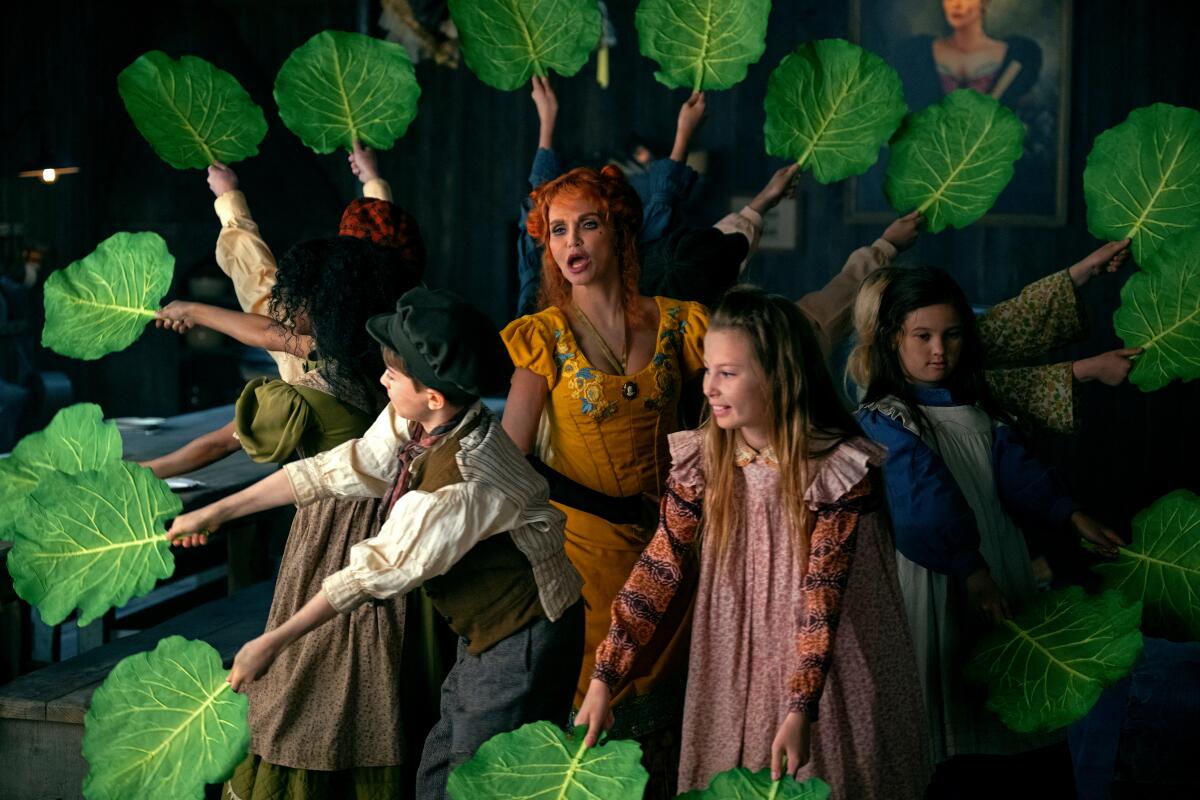
On the one hand, music is everywhere on the small screen — reality competition series, award shows and concert specials, among others. But narrative, scripted TV has had a rockier road. Veteran watchers can remember the cringe of 1990s “Cop Rock,” which flamed out after 11 episodes. But then “Glee” and “Crazy Ex-Girlfriend,” and one-off special episodes of shows like “Buffy the Vampire Slayer” and “Scrubs” suggested that audiences were developing a taste for mixing music and series television.
Streaming has, naturally, had a major effect. Bigger budgets and shorter seasons are critical to creating mini-musical television, where every episode can be an endurance test for crew and cast alike. Performers are put through their paces with singing and dancing lessons, pre-recording songs (whether they’re sung live during filming or not), while choreographers are using stand-in dance crews to pre-visualize the numbers, and set designers often build temporary sets for blocking.
With this new direction, actors must learn to stretch in new ways. In “George & Tammy,” title stars Michael Shannon and Jessica Chastain (who sang the songs live during filming) worked with vocal coach Ron Browning so they could at least echo the original George Jones and Tammy Wynette. “It’s kind of like breaking a horse, I guess,” says Shannon. “He’s like, ‘I know you can sing, but you got to figure out how to sing like this.’”
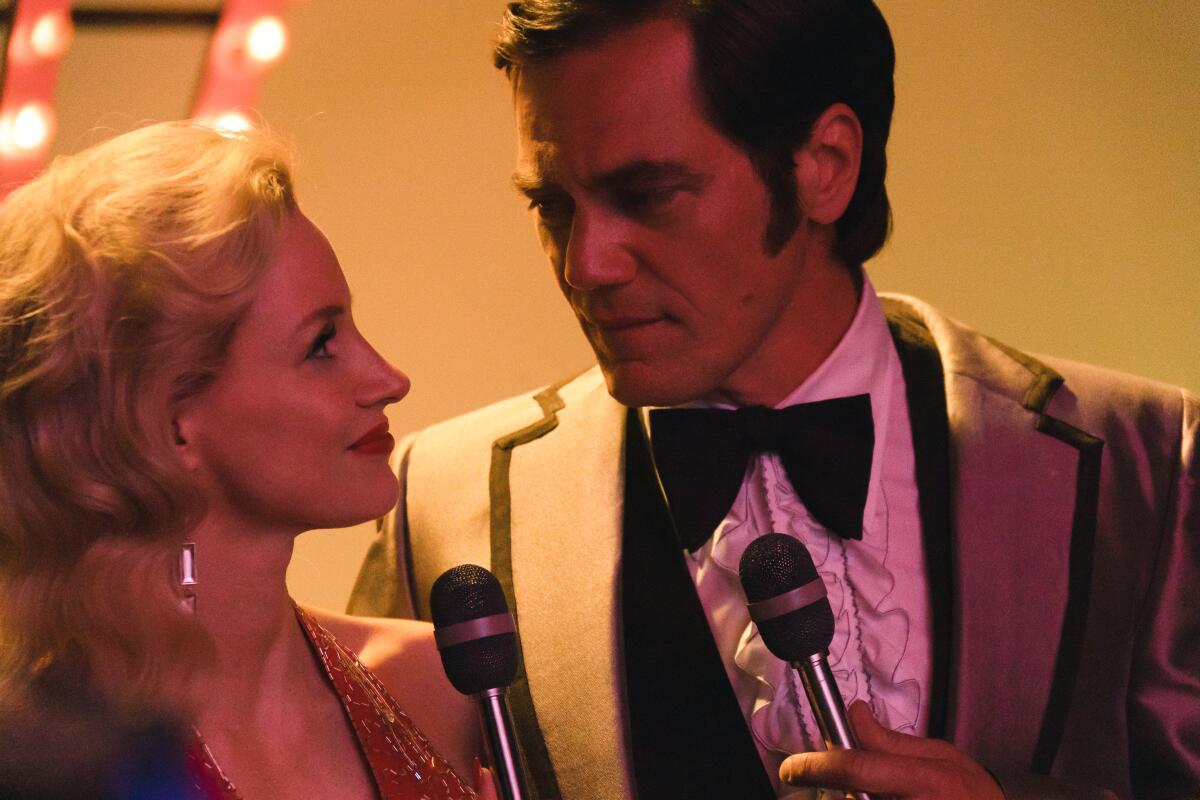
“We didn’t want to mimic them, because we don’t want to pretend, but we wanted to be present in a moment, so we took on certain characteristics,” Chastain adds. “I smoked a lot of cigarettes.”
And there are other, unexpected challenges for actors.
“In order to have a slow-motion walk of me, I have to sing in double time,” says Tricia Fukuhara, who plays Nancy in “Pink Ladies.” “Try singing double-time and make sure your mouth is reading perfectly. In the second episode, we go backward and forward in time, and I had to sing backwards.”
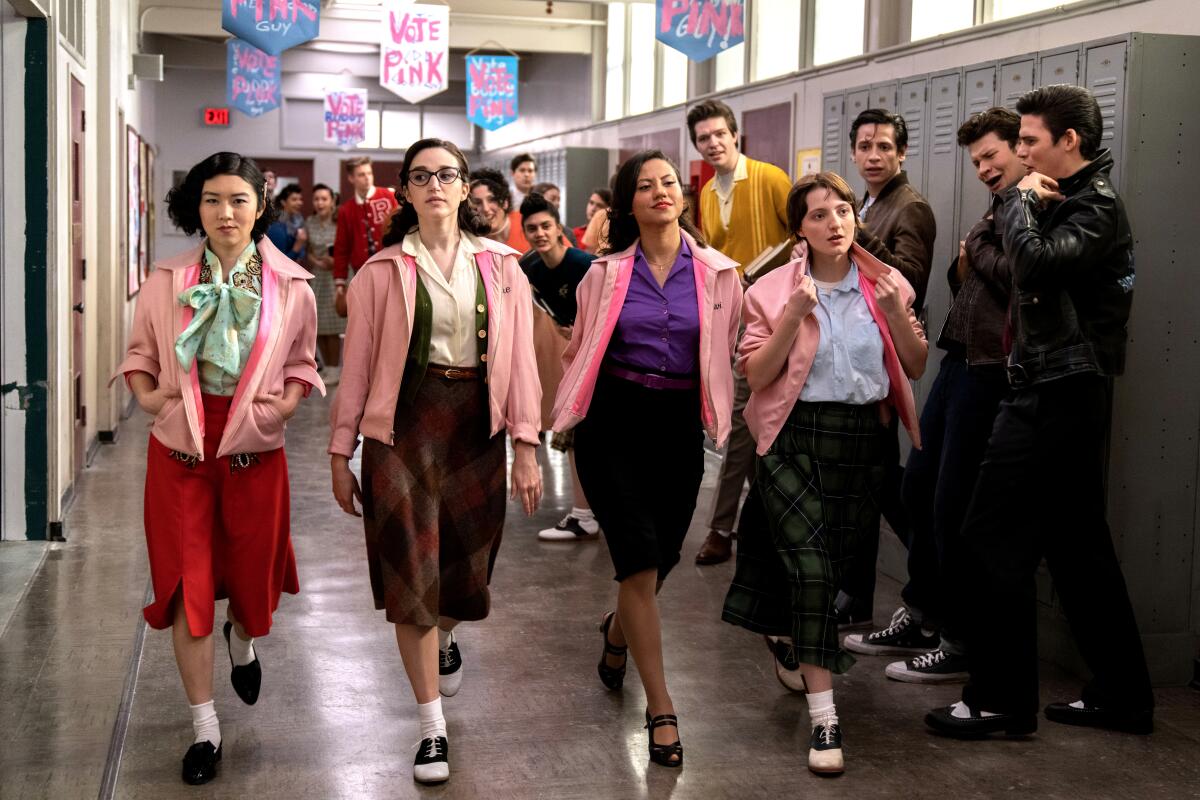
Even if an actor has some confidence in their performing ability, it’s stressful to have to learn to play instruments on camera for the first time too.
“There were moments I’d go home from rehearsal and sit in my car and cry because I didn’t think I could do it,” says Riley Keough, who plays Daisy in the limited series “Daisy Jones & the Six,” about a ’70s-era band making it big. “It wasn’t just about singing, but learning these instruments in a way that felt like we’d been doing it for years. A big part of the show is not faking it.”
One boon for storytellers in musical series is the ability to stretch and dive a little deeper. Most film or stage musicals wrap up in two hours or so, but streaming series can take eight or 10 hours to delve into plot points and character development.
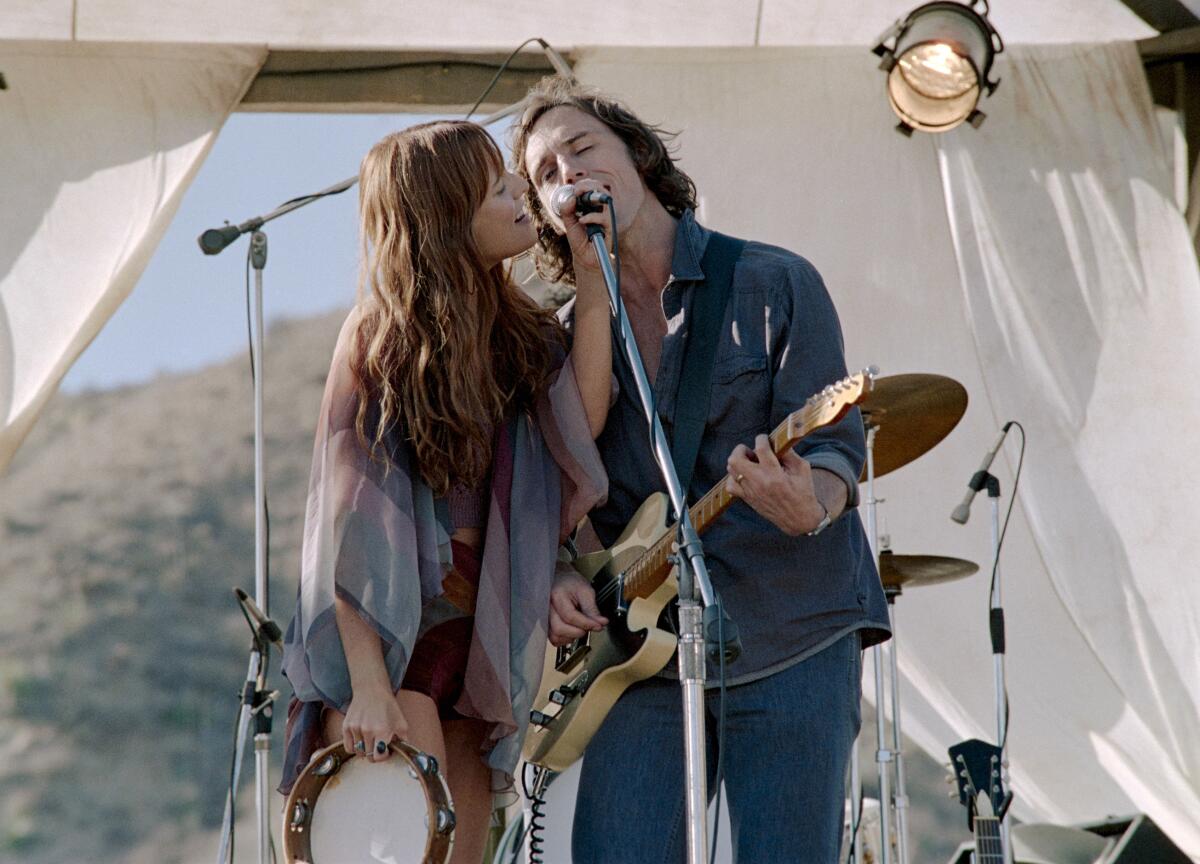
“In the past, film musicals have skimmed over things; each problem gets a song,” says “Pink Ladies” executive producer and producing director Alethea Jones. “We can give a song so many nuanced moments. We’re exploring themes from the 1950s, which are unfortunately relevant to today — and subtext is a key thing when it comes to that.”
“Up Here” star Mae Whitman, who plays Lindsay, a writer who moves to New York and finds love, agrees that it’s a pleasure to be subtle in a musical number. “Having singing being the most intimate part of the show meant we could take a vulnerable look into the character,” she says. “It’s always exciting to learn a new way to tell the truth and be vulnerable.”
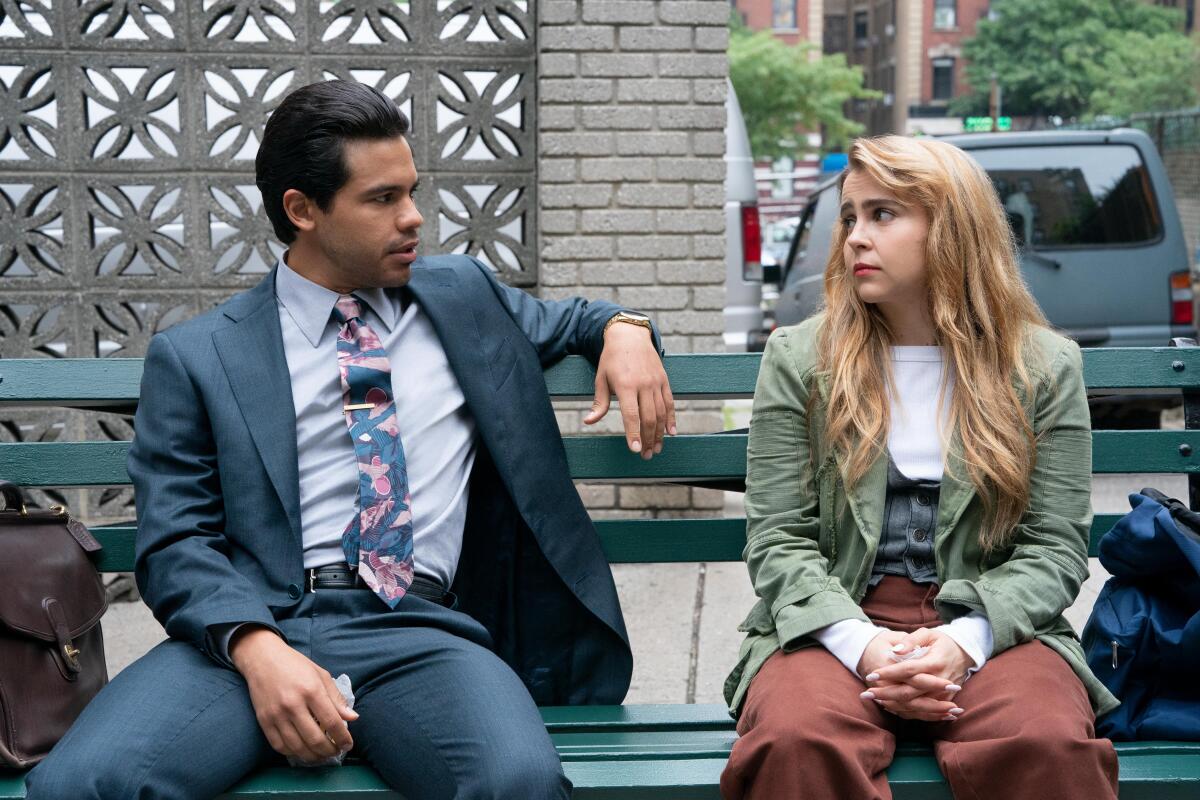
Having a musical series-friendly platform is critical, but the pendulum has been swinging in the musical’s favor for some time: Broadway shows have shifted into modern music, and such filmmakers as Baz Luhrmann (cited by several here as an inspiration) have blended music and story in exuberant, wild ways. But perhaps the retro nature of the musical is just the medicine audiences are craving amid pandemic and general societal malaise.
“News comes and goes so fast these days that you’re inundated,” says Adam Devine, who plays the title character in “Bumper in Berlin.” “That’s why you’re seeing a breath of fresh air on television — with shows that are lighthearted, where you sing and dance and can tune out and think that the world is an OK place.” He pauses. “Then you turn on CNN or Fox News and go, ‘What happened?’”
More to Read
From the Oscars to the Emmys.
Get the Envelope newsletter for exclusive awards season coverage, behind-the-scenes stories from the Envelope podcast and columnist Glenn Whipp’s must-read analysis.
You may occasionally receive promotional content from the Los Angeles Times.










